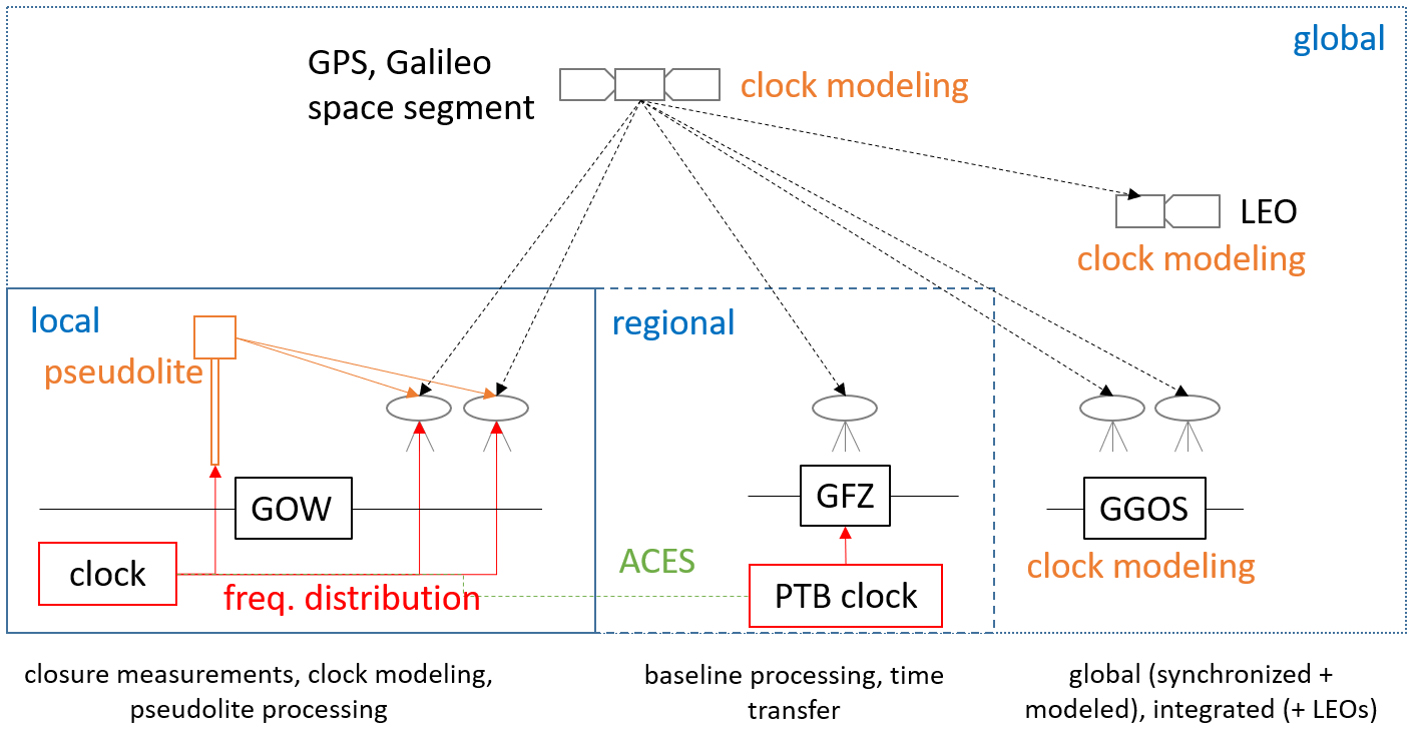Time as observable in integrated ground and space-based GNSS analysis (P6)
The goal of P6 is to integrate data from ultra-stable clocks on ground and in space ogether with high-precision time and frequency transmission systems in geodetic GNSS data analysis and to assess their potential for global geodetic precision GNSS data products.

The benefits of lossless linking of GNSS receivers to a common clock on short baselines on the Geodetic Observatory Wettzell (GOW) is evaluated using closure experiments (see Figure). The high precision link and ultra-stable clocks at the two geodetic observatories Wettzell and Potsdam and between Potsdam and PTB Braunschweig will be exploited to the maximum extent in order to assess the performance of GNSS analysis with a common clock on long baselines.
In parallel, the full potential of modelling the available ground and space clocks for satellite orbit improvement, decorrelation of parameters, and determination of geodetic parameters in a global network are explored. The results of various investigations, such as classical stability analyses, are considered for the deterministic and stochastic modeling of the ground and space clocks. Obtained findings are extrapolated to global GNSS networks using simulations and real data to evaluate, by means of the developed methods, the potential and trade-offs of time coherence (realized by ground and space links in a global network) and of modelling highly stable ground and space clocks for the estimation of global parameters.
Publications:
- Test1
- Test2